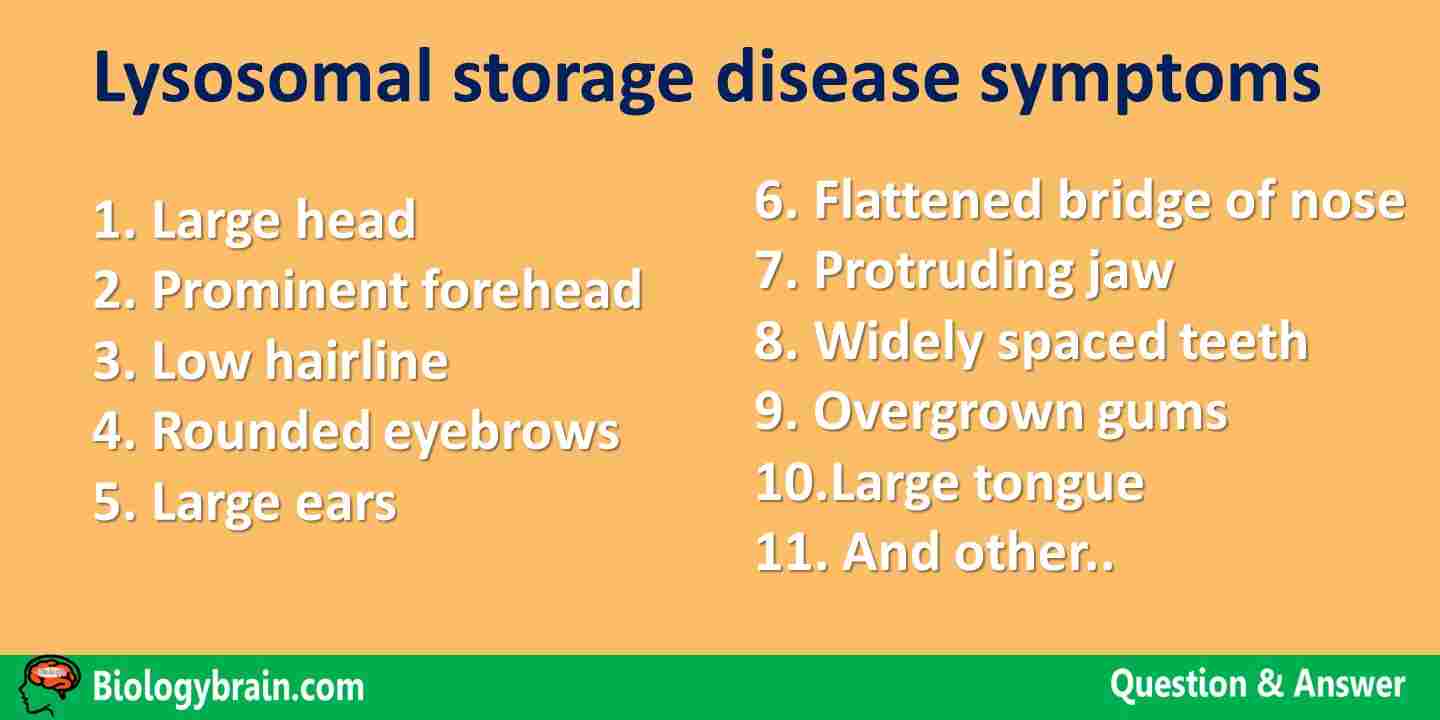The lysosomal storage diseases are caused due to defective or deficiencies of a single functional lysosomal enzyme. Mutations in the genes that encode the proteins or enzymes of lysosomes are responsible for more than 40 different human genetic diseases related to lysosomes, which are called lysosomal storage diseases because the unwanted or unfolded materials accumulate within the cells of affected individuals.
Possible lysosomal storage disease symptoms
Affected individuals will experience intellectual disability, skeletal abnormalities, and distinctive facial features. These abnormal facial features include:

1. large head
2. prominent forehead
3. low hairline
4. rounded eyebrows
5. large ears
6. flattened bridge of the nose
7. protruding jaw
8. widely spaced teeth
9. overgrown gums
10.large tongue
11. and other
Abnormalities in the skeletal system include bones thickening at the top of the skull (calvaria), bone deformations in the spine (vertebrae), reduced bone density (osteopenia), bowed legs, or knock knees, and deterioration of the bones and joints.
Related topics: Lysosome function in an animal cell and Lysosomal storage diseases.
The gene, MAN2B1 is accountable for the development of this lysosomal storage disease. In normal conditions, this gene provides the information to synthesize the functional enzyme called alpha-mannosidase, which is found in the lysosomes. This functional enzyme plays a pivotal role in the cleavage of complex sugar molecules, oligosaccharides into monomers, that are attached to certain proteins (glycoproteins).
Especially, alpha-mannosidase helps in the break down of monomeric sugars containing oligosaccharide called mannose. Mutation of the gene, MAN2B1, results in the synthesis of defective enzymes or complete deficiency of an enzyme. The absence of an enzyme is linked to the accumulation of mannose molecules in the lysosomes, which damage the body cells. Progressive damage of the body cells in the defective person will result in death.
Other examples:
Pompe disease (one of the most common lysosomal diseases) is developed due to irreversible mutations in the gene that encodes a lysosomal enzyme, acid alpha-glucosidase, which is a required enzyme for the breakdown of glycogen.
I-cell disease is caused due to deficiency of Golgi apparatus enzyme that catalyzes the first step in the tagging of lysosomal enzymes with mannose-6-phosphate in the Golgi apparatus. This enzyme deficiency leads to general failure of lysosomal enzymes to be incorporated into the lysosomes.










